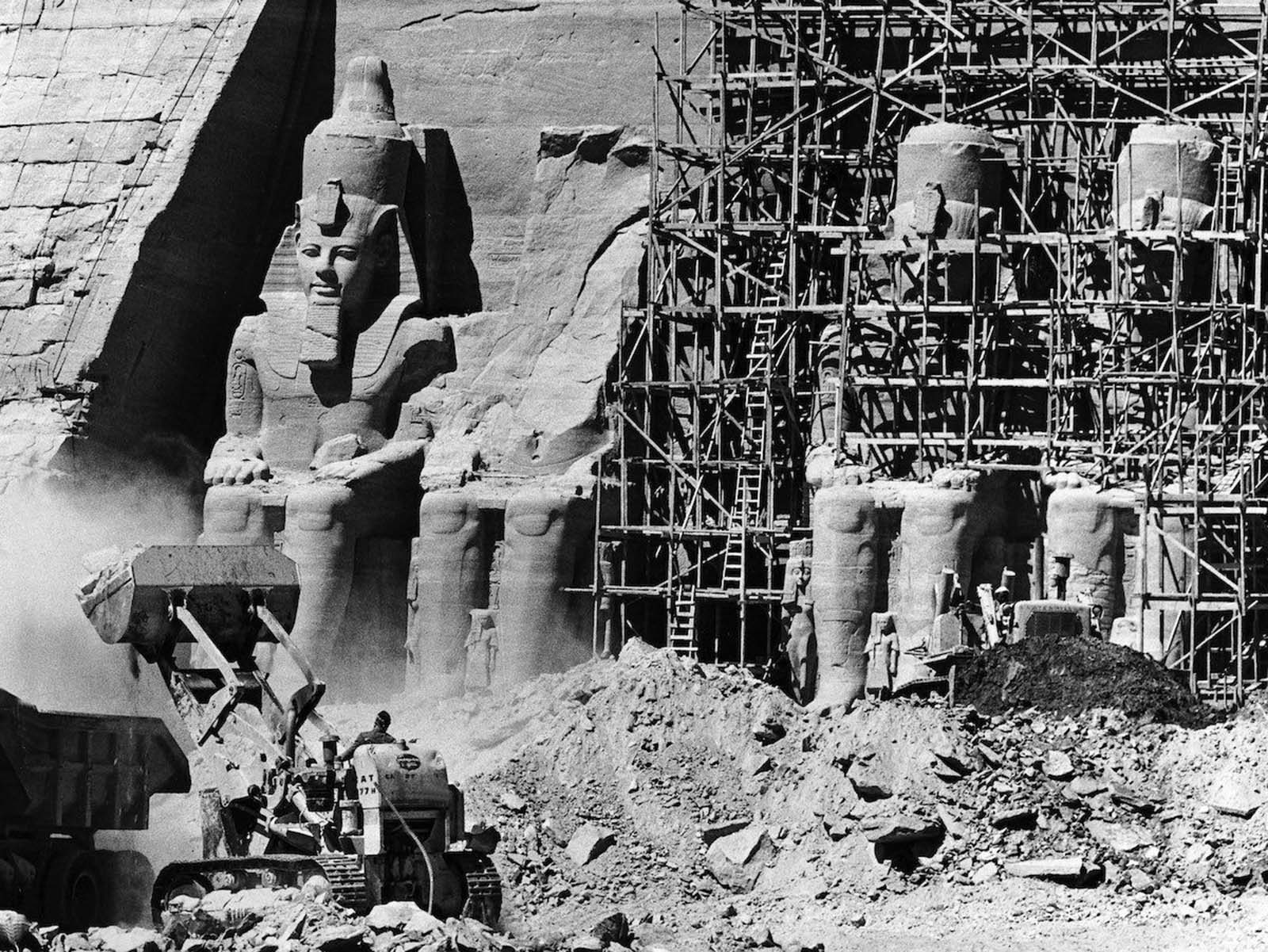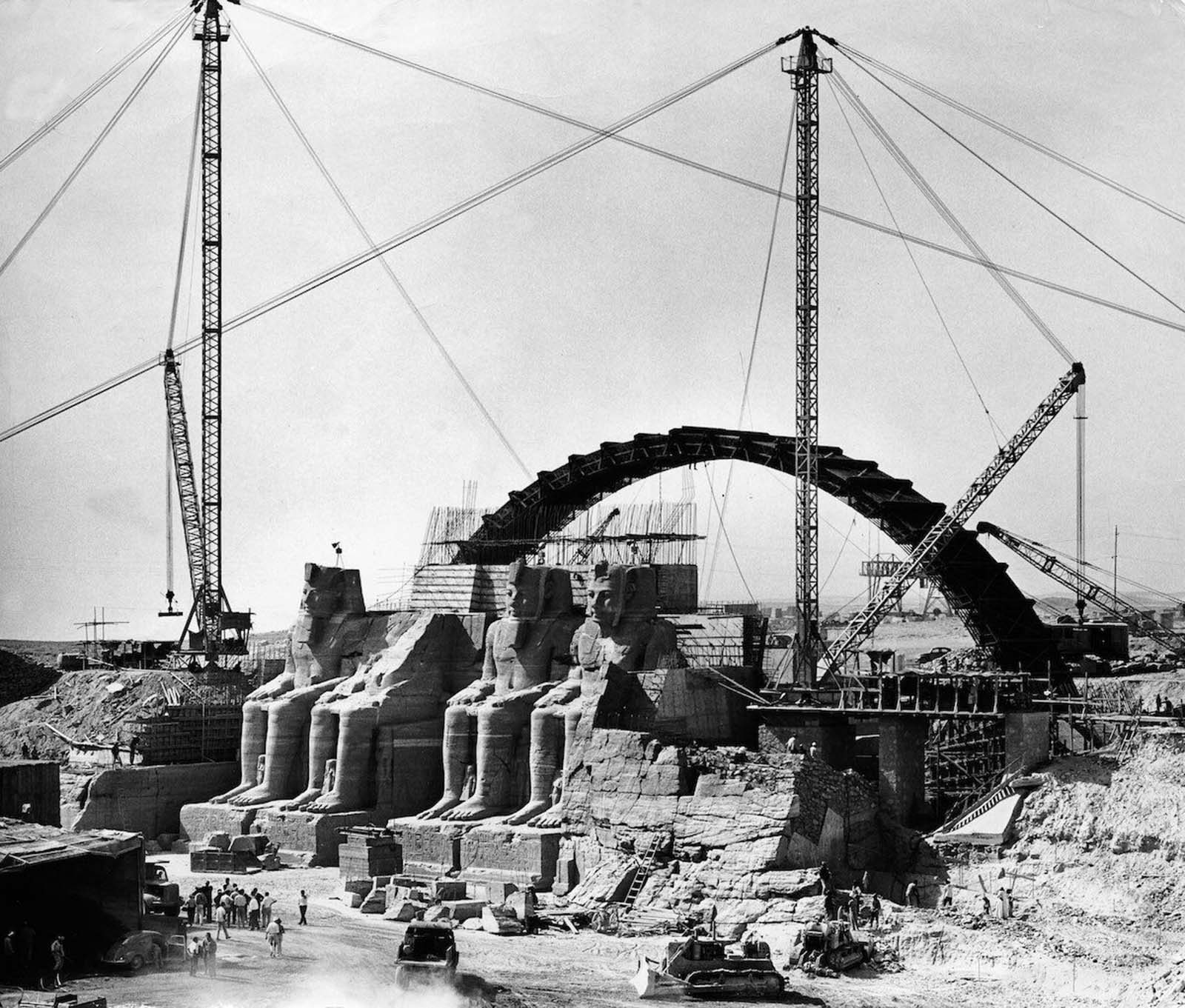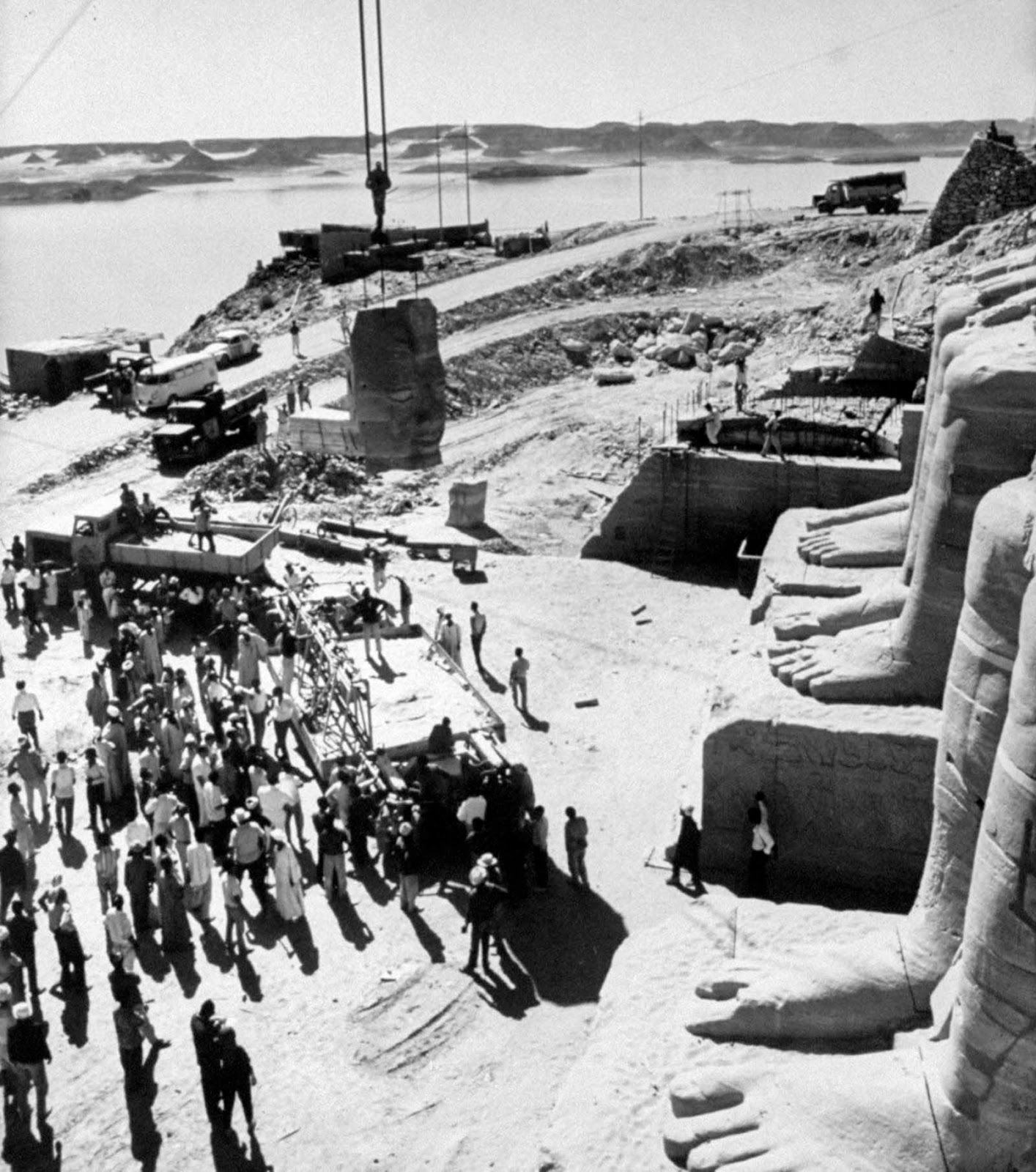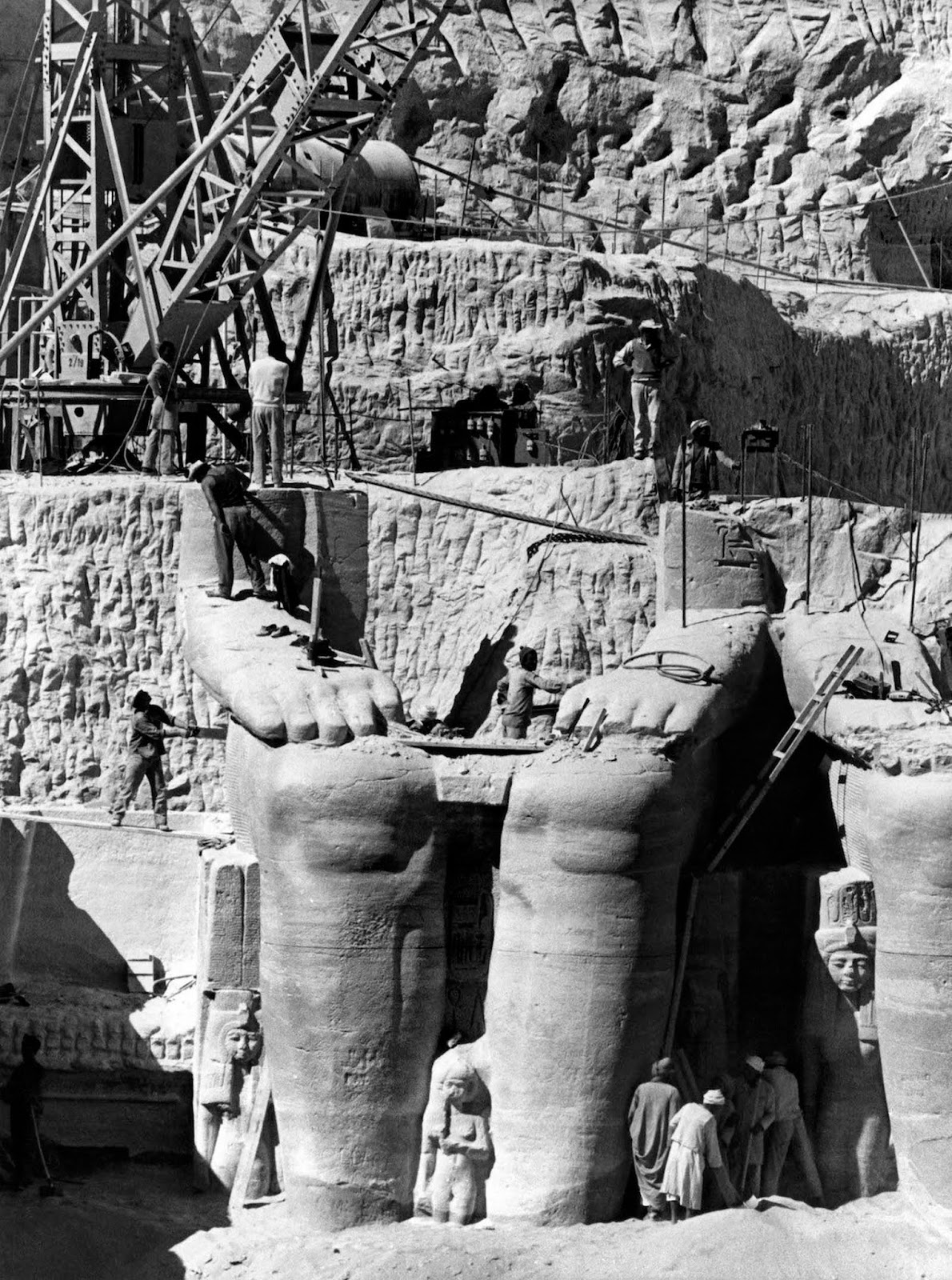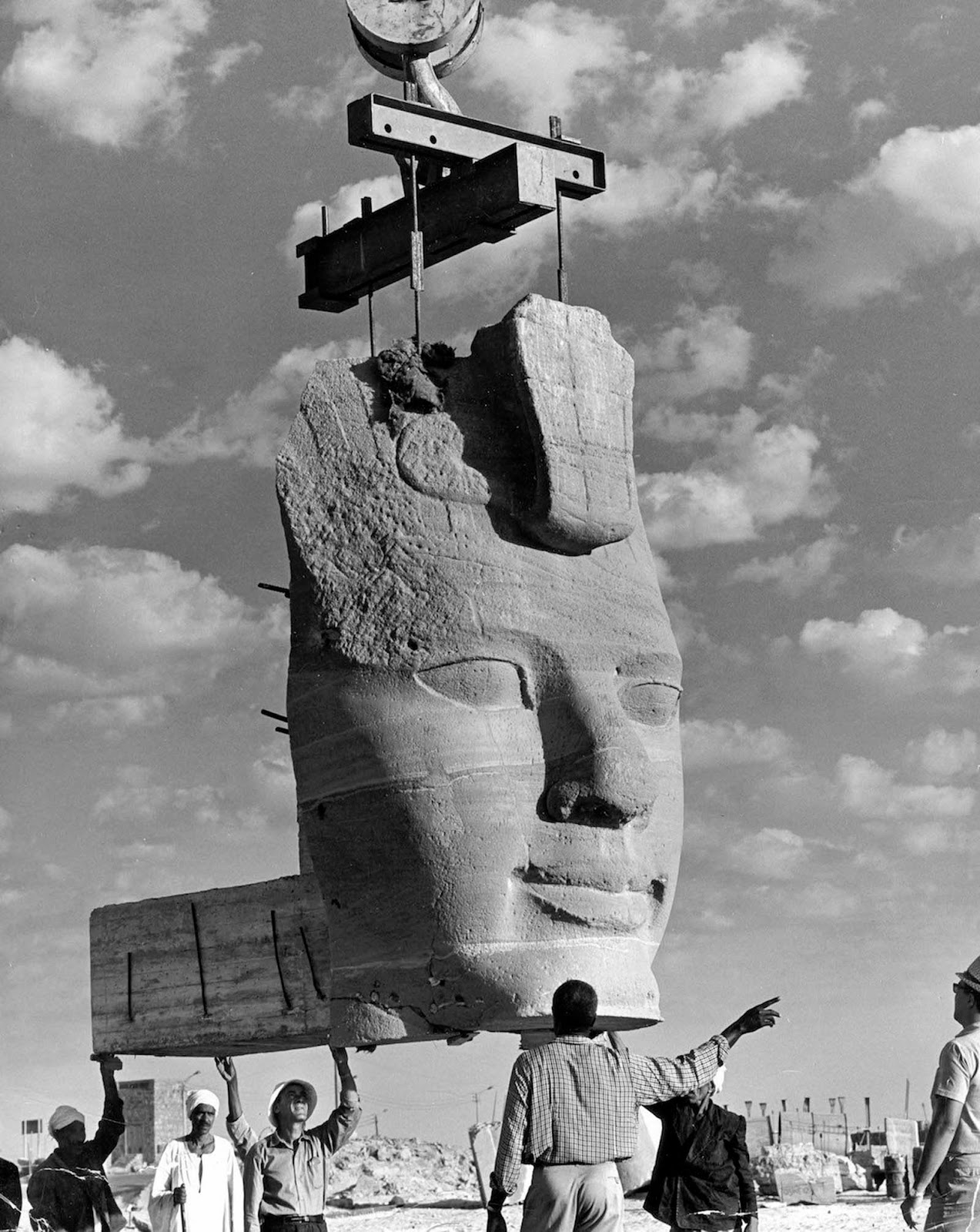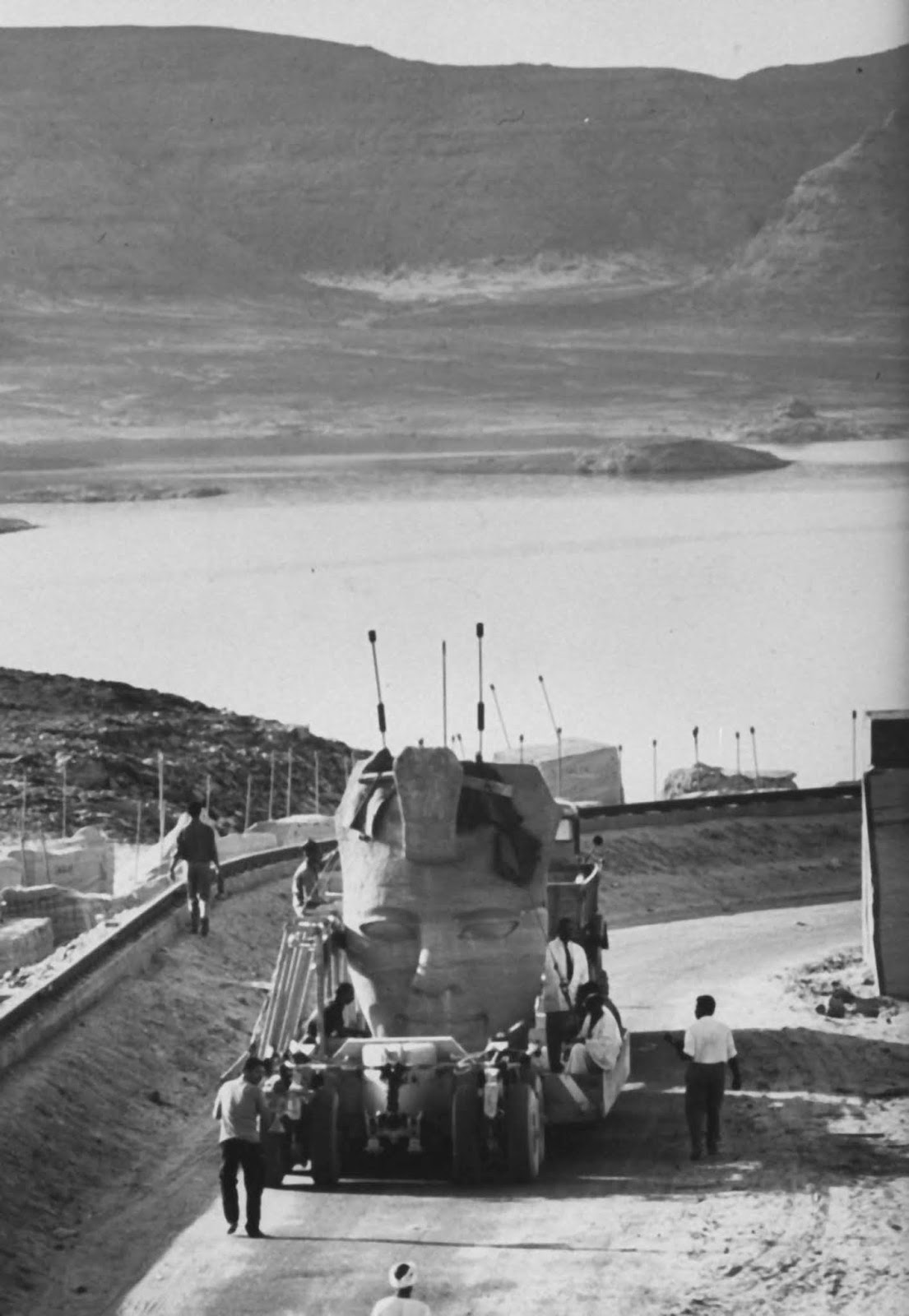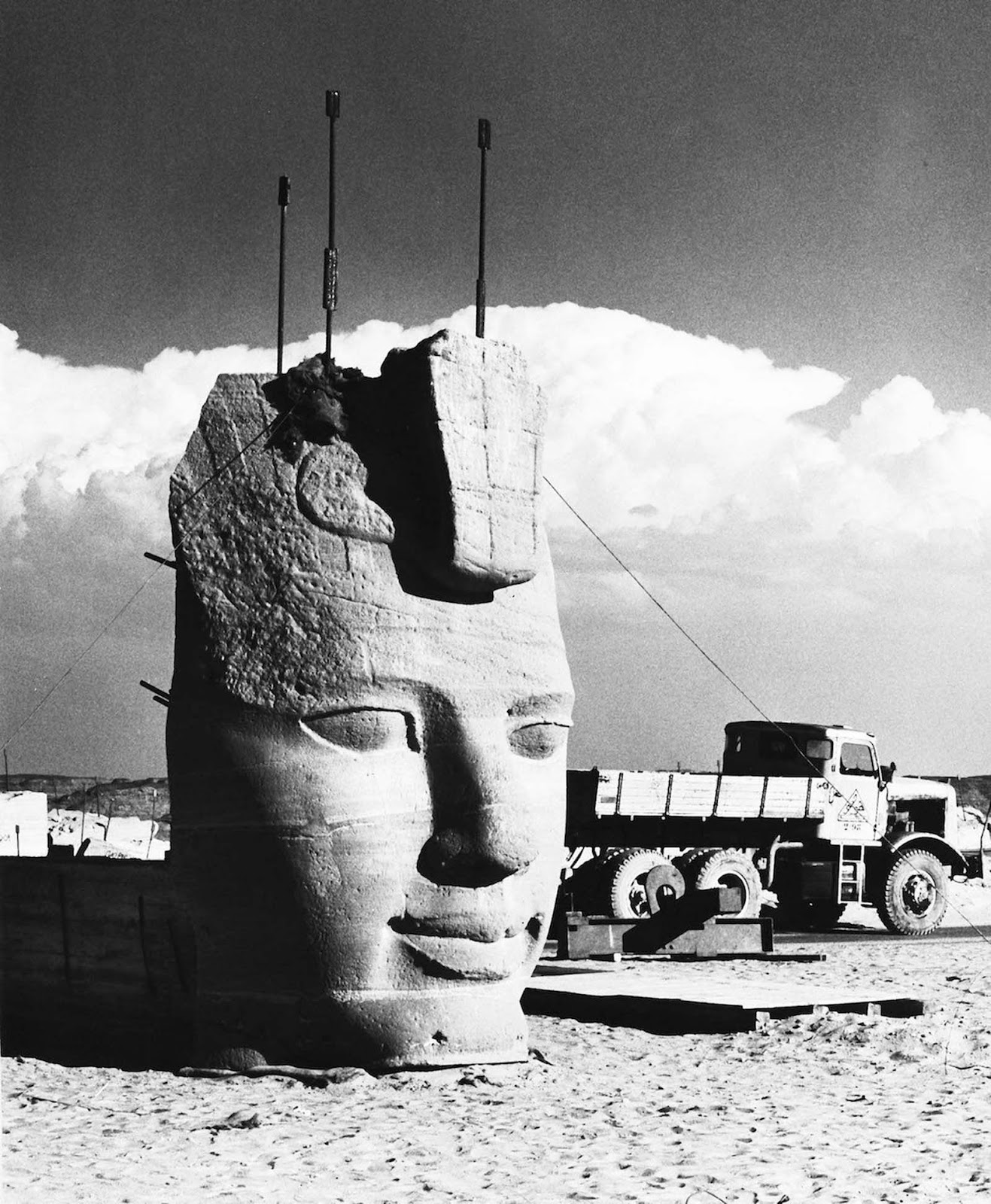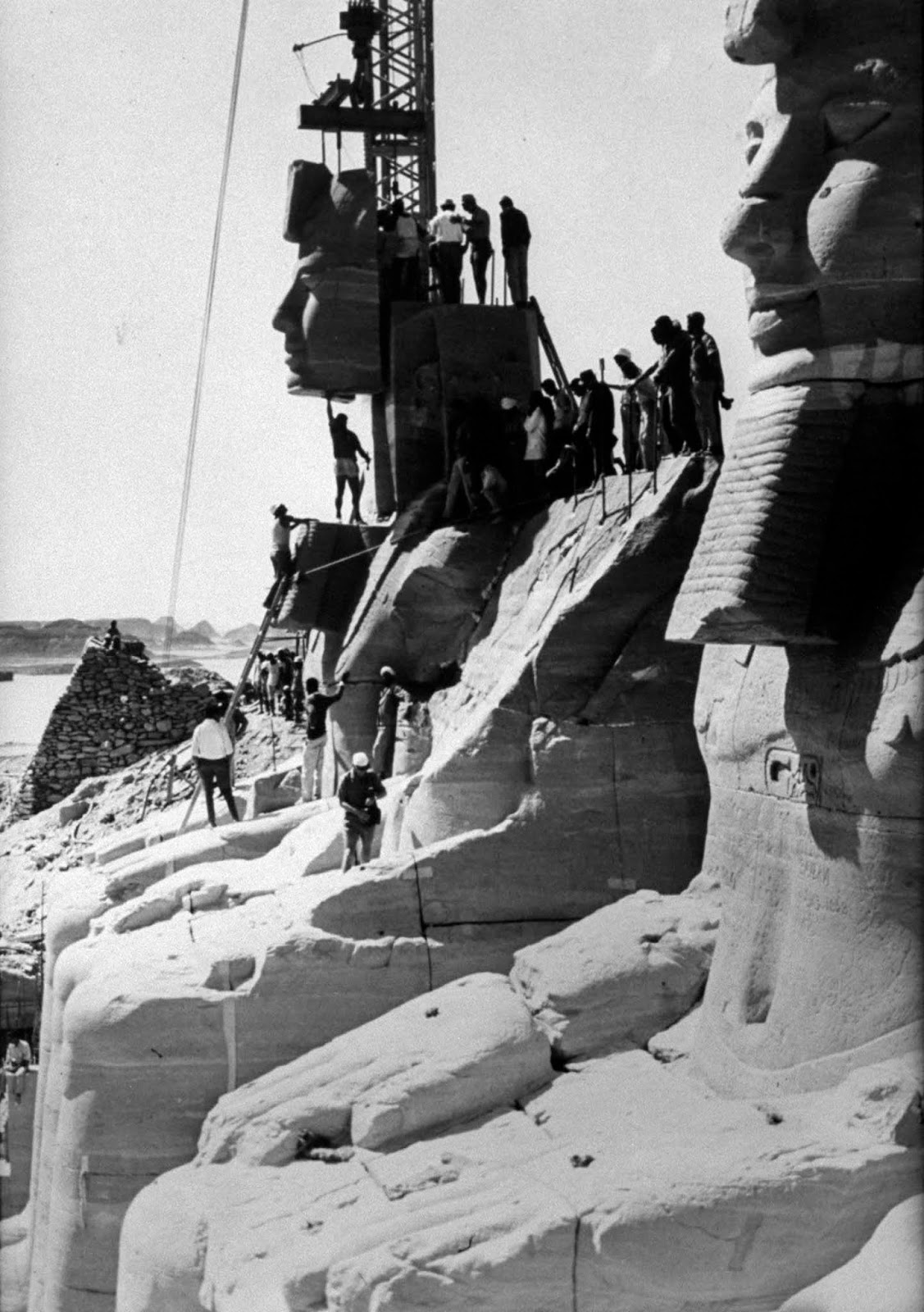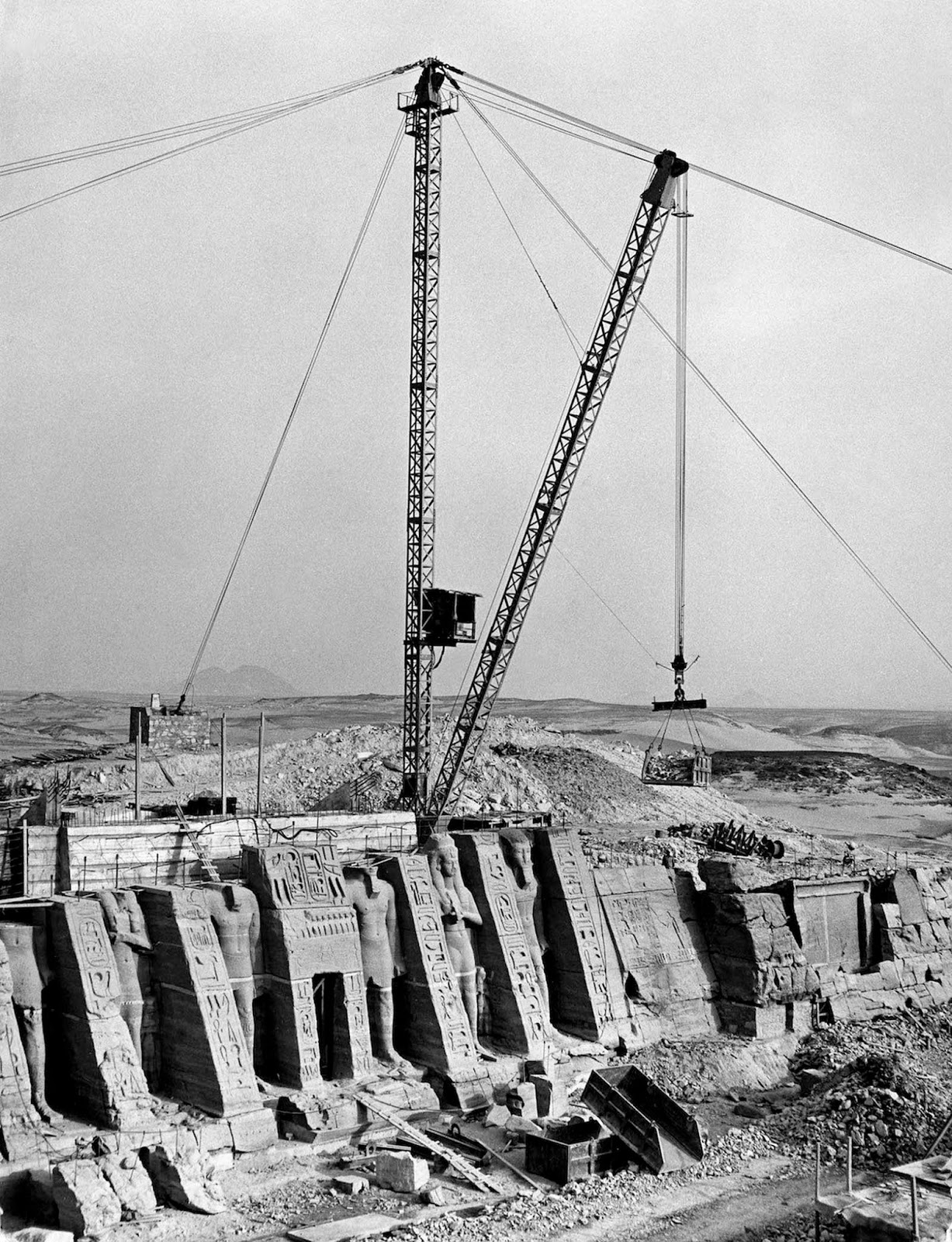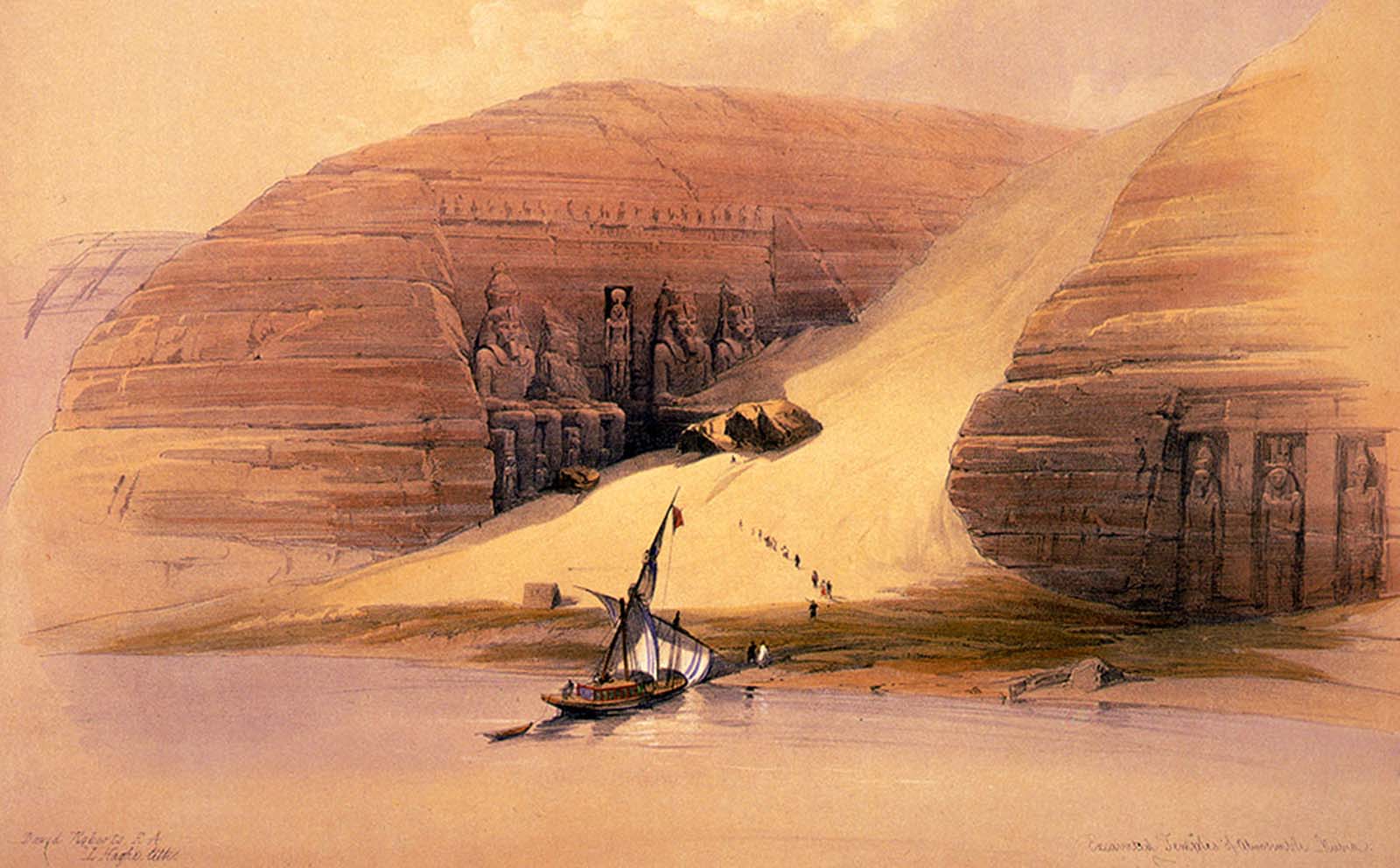The entranceway to the temple was built in such a way that on two days of the year, October 22 and February 22, sunlight shines into the inner sanctuary and lights up three statues seated on a bench, including one of the pharaoh. Historians think these dates mark his coronation and birth. In addition, Abu Simbel has a second, smaller, temple that may have been built for queen Nefertari. Its front includes two statues of the queen and four of the pharaoh, each about 33 feet (10 meters) in height. Each is set between buttresses carved with hieroglyphs. While the site was built by an Egyptian ruler, and is located within modern-day Egypt, in ancient times the place it was located in was considered part of Nubia, a territory that was at times independent of ancient Egypt. With the passage of time, the temples fell into disuse and eventually became covered by sand. By the 6th century BC, the sand already covered the statues of the main temple up to their knees. The temple was forgotten until 1813, when Swiss orientalist Jean-Louis Burckhardt found the top frieze of the main temple. Burckhardt talked about his discovery with Italian explorer Giovanni Belzoni, who travelled to the site, but was unable to dig out an entry to the temple. Belzoni returned in 1817, this time succeeding in his attempt to enter the complex. In the 1960s, the new Aswan Dam was built to control the Nile floods and generate electricity for rapidly modernizing Egypt. Nearly two dozen archaeological sites had to be moved to save them from the rising waters of the newly created Lake Nasser. The Temple of Philae, a popular attraction in Aswan was one such site, but the challenges of Abu Simbel were even more epic. Overseen by UNESCO, the giant figures of Ramses II were carefully sliced into a series of 20-tonne blocks and slowly moved away from the lake piece by piece, before being fitted back together like a giant game of Tetris into a specially constructed artificial cliff. The whole operation took four years and cost USD$300 million in today’s money. But the relocation was so precisely measured that twice a year, in February and October, the rising sun penetrates all the way to the temple’s interior, illuminating the sun god’s inner sanctum as it did when the temple was originally constructed. (Photo credit: Terrence Spencer / The LIFE Picture Collection / Getty Images / Wikipedia). Notify me of new posts by email.
Δ Subscribe
